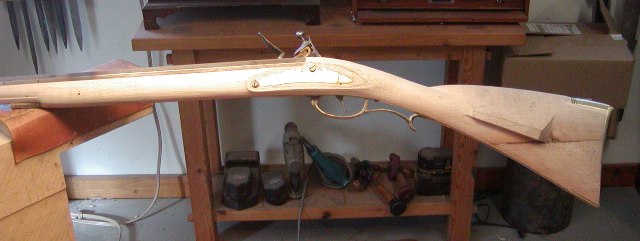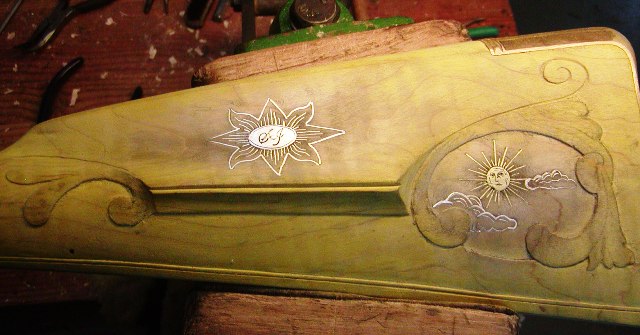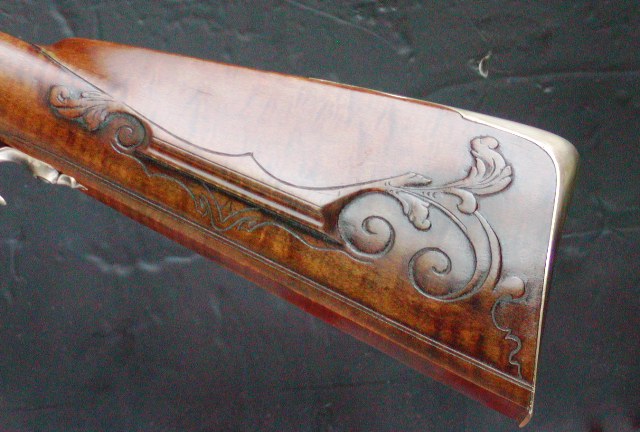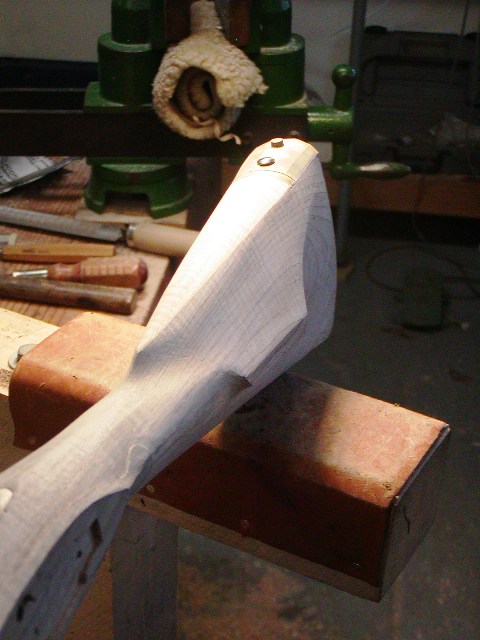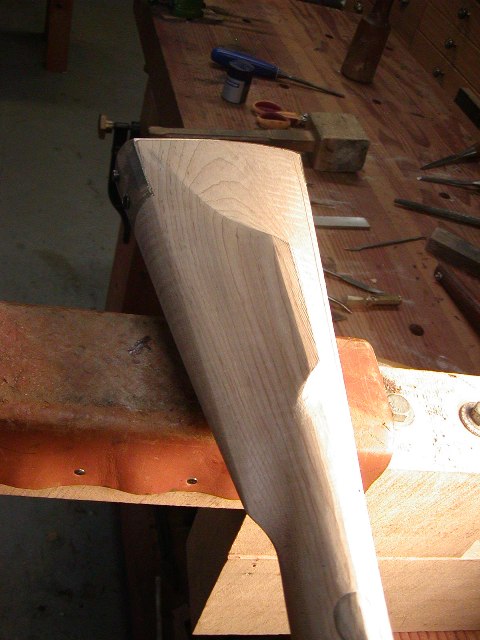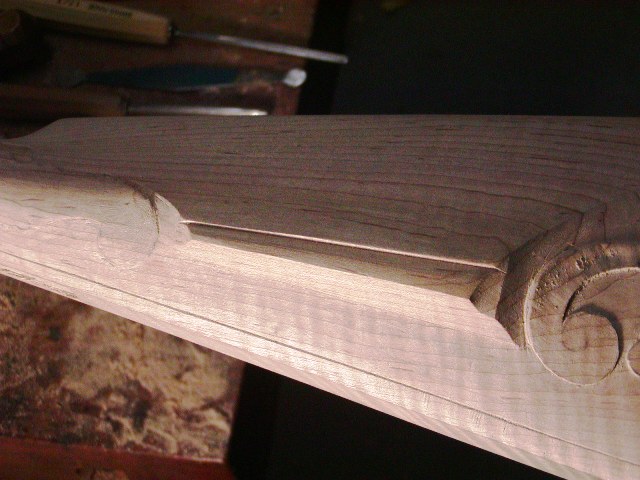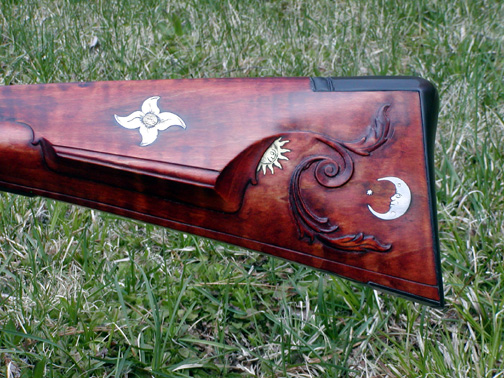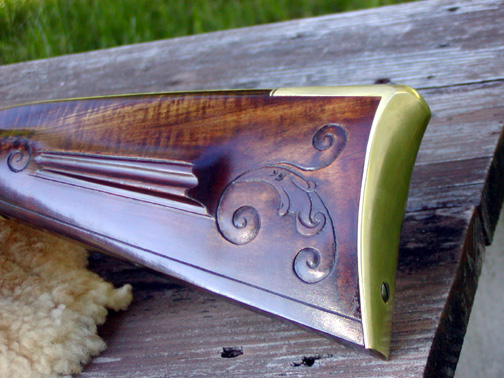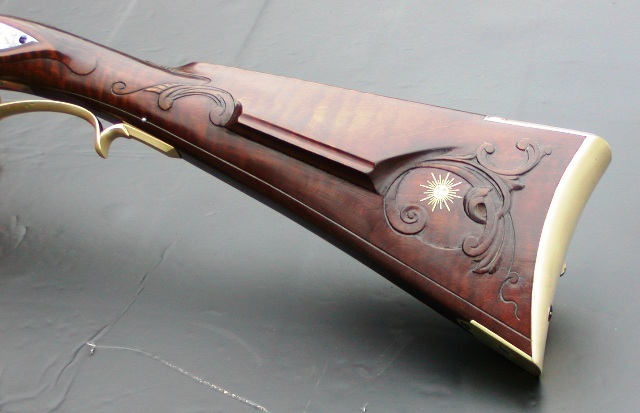Just got my Kibler Colonial kit this week. To give an idea of my skill level as you consider my question, this is my first build ever.
I’d like input on the cheekpiece. There’s a little bobble on the end closest to the butt plate; it’s rougher and also dips down slightly compared to the remainder of the cheek rest. It’s hard to photograph but I tried to do so.
I ran it by Jim via Lorie and he said just to sand it with a sanding block. Sounds easy enough, but it’s my first build and I don’t want to screw up this fine gun out of the gate so I have a couple questions for the learned folks here.
With a cheek rest like this, is the goal that it be a uniform height? That is, if it is 1/2” high at the one end of the rest, should it be it 1/2” inch high at the other end as well?
To determine a line to sand to, would it be reasonable to mark a line (similar to what I did with the red line in the photo) and sand down to that point?
Any other suggestions or considerations are appreciated. I’m sure I’m overthinking a pretty straightforward task, but I tend to want to try get things right (and by right I mean perfect) the first time.
Thanks!
I’d like input on the cheekpiece. There’s a little bobble on the end closest to the butt plate; it’s rougher and also dips down slightly compared to the remainder of the cheek rest. It’s hard to photograph but I tried to do so.
I ran it by Jim via Lorie and he said just to sand it with a sanding block. Sounds easy enough, but it’s my first build and I don’t want to screw up this fine gun out of the gate so I have a couple questions for the learned folks here.
With a cheek rest like this, is the goal that it be a uniform height? That is, if it is 1/2” high at the one end of the rest, should it be it 1/2” inch high at the other end as well?
To determine a line to sand to, would it be reasonable to mark a line (similar to what I did with the red line in the photo) and sand down to that point?
Any other suggestions or considerations are appreciated. I’m sure I’m overthinking a pretty straightforward task, but I tend to want to try get things right (and by right I mean perfect) the first time.
Thanks!








